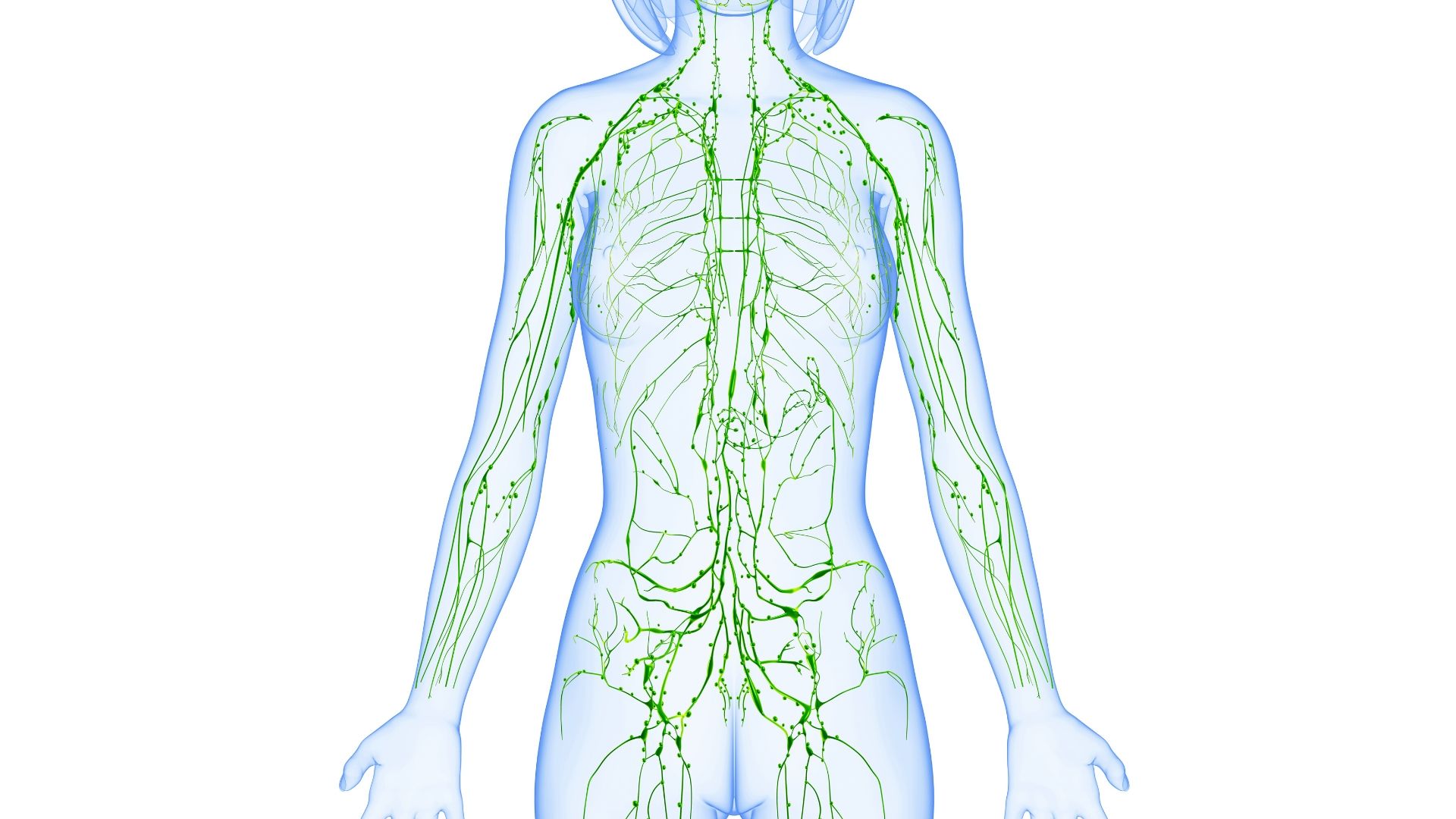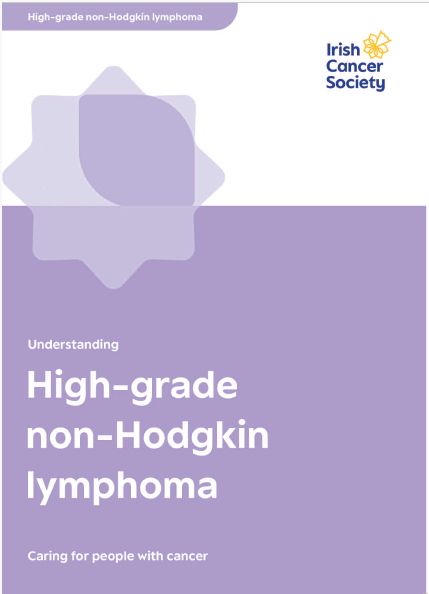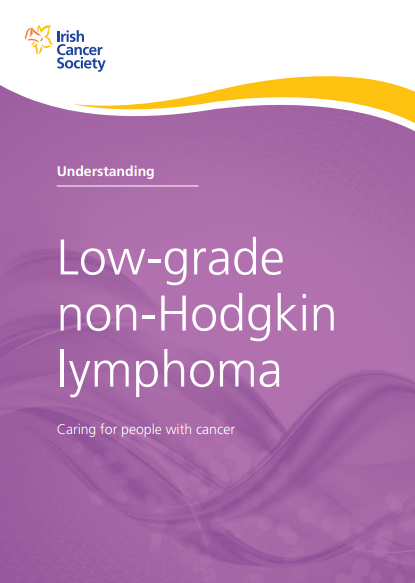Non-Hodgkin lymphoma
Non-Hodgkin lymphoma is a cancer of the lymphatic system, which is part of the immune system.
About 800* people are diagnosed with non-Hodgkin lymphoma each year in Ireland. Lymphoma can occur at any age but it is more common in older people.
Signs and symptoms
Learn about the signs and symptoms of non-Hodgkin lymphoma. You are more likely to survive cancer if you find it at an earlier stage.
Treatments
There are a number of different treatments available for non-Hodgkin lymphoma. Your medical team will explain the best treatment options for you.
What is non-Hodgkin lymphoma?
Lymphoma is a cancer of the lymphatic system, which is part of the immune system that helps protect us from infection and disease.
Lymphoma happens when lymphocytes (a type of white blood cell) grow in an abnormal way. These abnormal cells start to collect in your lymphatic system, particularly in the lymph nodes. This causes swellings, known as lymphoma.
Lymphoma most commonly affects the lymph nodes, but it can start in almost any part of the body, including the spleen, stomach, small bowel, skin, tonsils, thyroid or testicles.
Lymphoma cells can also be found in the bone marrow. Bone marrow is the spongy material in the middle of bones. It makes all the different types of white blood cells, including lymphocytes, red blood cells, which carry oxygen from your lungs to other cells in your body and platelets, which help blood to clot and prevent bleeding and bruising.
There are 2 types of lymphoma. One is called Hodgkin and the other is non-Hodgkin lymphoma. The difference between the 2 types depends on the appearance of the lymphoma cells under a microscope. Most lymphomas are non-Hodgkin lymphomas.
Lymphoma that grows outside the lymph nodes is called extra-nodal lymphoma. If you have extra-nodal lymphoma, your specialist doctor and nurse can explain this in more detail and what this may mean for your treatment.
What are the types of non-Hodgkin lymphoma?
Lymphomas develop from white blood cells called lymphocytes. Lymphomas can be described by the type of lymphocyte white blood cells that are affected: B-cell lymphoma, T-cell lymphoma and NK-cell lymphoma.
Non-Hodgkin lymphoma can also be described as low grade or high grade, based on how quickly the lymphoma is growing.
Read more about the types of non-Hodgkin lymphoma.
What is the lymphatic system and what does it do?
The lymphatic system is part of the body’s immune system, which helps to protect us from infection and disease.

- Lymph nodes (or lymph glands): Contain infection-fighting white blood cells called lymphocytes. There are 3 types of lymphocytes, B cells, T cells and NK (natural killer) cells. Lymph nodes often swell when they are fighting infection, which is a normal, healthy response. Lymph nodes are found mainly in the neck, armpit, groin and tummy. Lymph nodes often swell when they are fighting infection, which is a normal, healthy response. You may only become aware of your lymph nodes if they become swollen or enlarged.
- Lymph vessels: A network of thin tubes that connect lymph nodes and transport excess fluid and waste from body tissues and filter bacteria and viruses.
- The spleen: Helps to filter out damaged cells from the blood stream and also to fight infection.
- Other body organs: Your tonsils, adenoids, thymus and bone marrow.
Sometimes cancer cells spread into lymph nodes or cancer can start in the lymph nodes themselves.
Medical content updated from our 'Understanding low-grade non-Hodgkin lymphoma' booklet (2022) and 'Understanding high-grade non-Hodgkin lymphoma' booklet (2025), reviewed by: Eoghan Molloy, Consultant Haematologist; Liam Smyth, Consultant Haematoligist; Fidelma Hackett, Advanced Nurse Practitioner Haematology; Adrian O Dálaigh, Haematology ANP; Tunde Olaniran, CNS Lymphoma; Noreen Twohill, Daffodil Centre Nurse; Siobhan Hopkins, Daffodil Centre Nurse.
Continue reading about non-Hodgkin lymphoma
Publications about non-Hodgkin lymphoma
Talk to a Cancer Nurse

Support Line
Our Daffodil Centres

*The Irish Cancer Society uses the most up-to-date cancer statistics from the National Cancer Registry Ireland, available on www.ncri.ie


